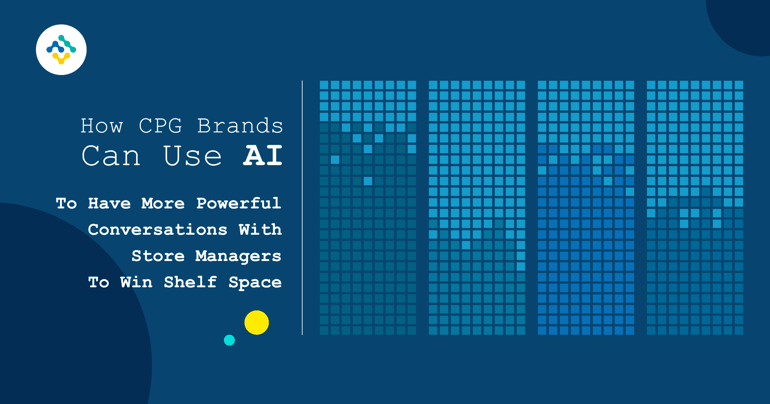Welcome to Repsly’s new AI column aimed to highlight ways that AI can be a powerful tool for CPG brands to grow shelf space, drive sales, and maximize brand control and presence.
In all instances, we’re using AI to write the blogs as well. We’ll highlight how long it took us to write each piece, and you’ll walk away from each piece with powerful ideas of how to leverage AI for your business.
Authored by Chat GPT, with a little love from Repsly
Write time: 5 minutes
Read time: 2 minutes
CPG brands can leverage AI to have more powerful conversations with store managers and increase their chances of winning shelf space, including coveted endcap displays. Here's how AI can be utilized to steer the conversation with an area manager at Whole Foods:
-
Data analysis and insights: AI can analyze large amounts of sales data, market trends, and consumer behavior to provide valuable insights. Brands can use this information to understand customer preferences, identify product demand, and make data-driven recommendations to the area manager.
-
Personalization: AI-powered recommendation systems can help CPG brands tailor their offerings to the specific needs and preferences of Whole Foods customers. By demonstrating a deep understanding of the target audience and proposing personalized promotions or exclusive product launches, brands can make a compelling case for gaining endcap display space.
-
Competitive analysis: AI can monitor competitor activities, pricing strategies, and product launches. By staying informed about competitor offerings and highlighting unique selling propositions, CPG brands can demonstrate their competitive advantage to the area manager. AI can provide real-time updates on competitor movements, enabling brands to adjust their strategies accordingly.
-
Visual merchandising optimization: AI can analyze product images, store layouts, and customer traffic patterns to optimize visual merchandising. Brands can use this technology to propose visually appealing and strategically positioned displays that enhance the shopping experience and drive sales. By showcasing the potential impact of their proposed endcap displays, brands can strengthen their argument.
-
Demand forecasting: AI algorithms can accurately predict product demand based on historical data, seasonal trends, and external factors. By sharing these demand forecasts with the area manager, CPG brands can demonstrate their ability to meet consumer needs and minimize out-of-stock situations. This can help build trust and increase the likelihood of securing endcap display space.
-
Performance tracking: AI can monitor the performance of different product SKUs and marketing initiatives. Brands can leverage this information to showcase their track record of success, highlight positive sales growth, and demonstrate the potential benefits of allocating prime shelf space or endcap displays to their products.
-
Natural language processing (NLP): NLP algorithms can analyze previous conversations and extract key insights. By utilizing NLP, CPG brands can gain a deeper understanding of the area manager's preferences, concerns, and priorities. This knowledge can be used to tailor the conversation, address specific pain points, and present compelling arguments that resonate with the manager's objectives.
-
Virtual assistants and chatbots: AI-powered virtual assistants or chatbots can provide real-time support to sales representatives during conversations with area managers. These assistants can quickly retrieve relevant data, answer questions, and offer suggestions, enabling sales representatives to have more informed and persuasive discussions.
By incorporating AI into their conversations with store managers, CPG brands can leverage data-driven insights, personalized recommendations, and visual demonstrations to increase their chances of winning shelf space, including sought-after endcap displays at Whole Foods or any other retailer.




